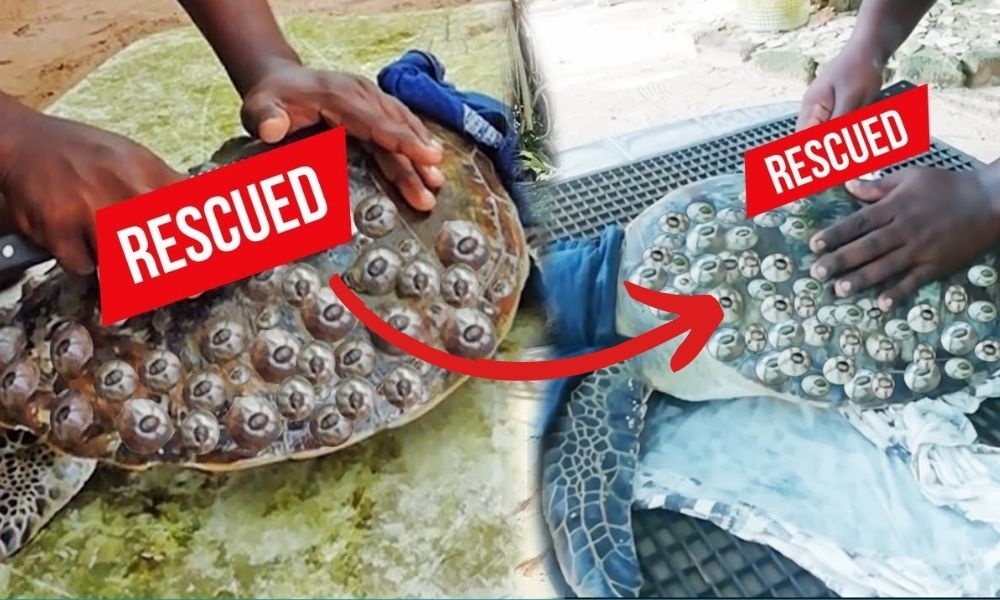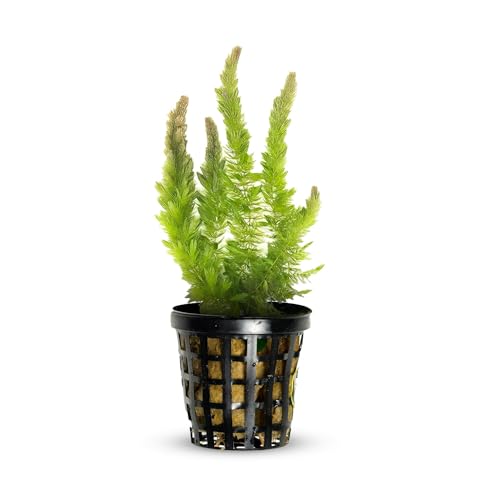Setting up an aquarium for a box turtle is not complicated. First, you need the right tank and equipment.
Then, create a comfortable habitat for your turtle. Box turtles need a special environment to stay healthy. A good setup includes a spacious tank, clean water, and the right temperature. You also need to provide a mix of water and land areas.
This helps mimic their natural habitat. Proper lighting and filtration are essential too. With some care and planning, you can create a perfect home for your box turtle. This guide will walk you through each step to ensure your turtle thrives. Let’s get started on making a great aquarium for your box turtle.
Choosing The Right Tank
Setting up an aquarium for a box turtle starts with choosing the right tank. The tank will be your turtle’s home, so it needs to be comfortable and safe. Consider the size and material of the tank for the best results.
Tank Size
The size of the tank is very important. Box turtles need plenty of space to move around. A good rule of thumb is to provide at least 10 gallons of water for every inch of the turtle’s shell length.
For example, if your box turtle’s shell is 4 inches long, the tank should be at least 40 gallons. Larger tanks are always better. They give your turtle more room to explore and exercise.
Make sure the tank is not too shallow. Box turtles need a tank that is both wide and tall. This helps them swim and climb easily.
Tank Material
The material of the tank is also crucial. Glass tanks are popular because they are clear and easy to clean. They allow you to see your turtle from all angles.
Acrylic tanks are another option. They are lighter and less likely to break. But, they can scratch more easily than glass tanks.
Some people use plastic tubs. These are cheaper and very durable. They are not as visually appealing, but they work well for turtles.
Choose the material that fits your needs and budget. Always ensure it is safe and free of sharp edges.

Setting Up The Substrate
Setting up the substrate in your box turtle’s aquarium is crucial. It provides comfort and mimics their natural habitat. A well-chosen substrate can help keep your turtle healthy and happy.
Substrate Options
There are various substrates suitable for box turtles. Each has its own benefits:
- Topsoil: Natural and retains moisture well.
- Coconut Coir: Soft, absorbent, and easy to clean.
- Reptile Bark: Provides good drainage and is visually appealing.
- Moss: Keeps humidity levels high, ideal for turtles.
Choose a substrate that is free of pesticides and chemicals. Ensure it is deep enough for digging, around 3-4 inches.
Maintaining The Substrate
Regular maintenance keeps the substrate fresh and healthy. Follow these steps:
- Spot clean daily to remove waste and uneaten food.
- Mix the substrate weekly to prevent mold and bacteria.
- Replace the entire substrate every 2-3 months.
Use a sieve to remove debris and keep the substrate clean. Mist the substrate with water to maintain moisture levels. This helps create a comfortable environment for your box turtle.
Creating A Basking Area
Creating a basking area for your box turtle is essential. It provides warmth and UV light, promoting health. Basking helps turtles to digest food and absorb nutrients. Let’s explore how to set up an effective basking area.
Basking Platform
The basking platform must be stable and comfortable. A good basking platform can be a flat rock or a turtle dock. Make sure it is large enough for your turtle to move around. Avoid sharp edges that might harm your turtle.
| Material | Pros | Cons |
|---|---|---|
| Flat Rock | Natural Look, Durable | Heavy, Hard to Clean |
| Turtle Dock | Lightweight, Easy to Install | Less Natural, Can Wear Out |
Heat Lamp
A heat lamp is crucial for the basking area. It provides the necessary warmth your box turtle needs. Position the lamp above the basking platform. Keep it at a safe distance to avoid burns.
- Choose a heat lamp with the right wattage.
- Install a thermometer to monitor temperature.
- Adjust the height of the lamp as needed.
The ideal temperature for the basking area is between 85°F and 90°F. This ensures your turtle stays healthy and active.
By setting up a proper basking area, you create a safe and comfortable environment for your box turtle. This helps in promoting their overall well-being.

Providing Uvb Lighting
Ensuring your box turtle has proper UVB lighting is crucial for its health. UVB lighting helps turtles synthesize Vitamin D3, which is essential for calcium absorption. Without it, turtles can develop shell deformities and other health issues. Let’s explore how to provide the best UVB lighting for your box turtle.
Uvb Bulb Types
There are different types of UVB bulbs available for box turtles. Each type has its benefits and drawbacks.
| Bulb Type | Pros | Cons |
|---|---|---|
| Fluorescent Tube | Even light distribution, long-lasting | Requires a fixture, may need a reflector |
| Compact Fluorescent | Easy to install, less space needed | May cause eye issues, less coverage |
| Mercury Vapor | UVB and heat source, high output | Gets very hot, more expensive |
Light Placement
Proper light placement is essential to ensure your turtle gets enough UVB exposure. Follow these tips for optimal placement:
- Distance: Place the UVB bulb 12-18 inches from the basking area.
- Angle: Position the bulb directly above the turtle’s basking spot.
- Duration: Keep the UVB light on for 10-12 hours daily.
- Reflector: Use a reflector to enhance UVB distribution.
Regularly check your UVB bulbs and replace them every 6-12 months. This ensures your turtle gets consistent UVB exposure, promoting their health and well-being.
Adding Hiding Spots
Box turtles need a safe and comfortable environment. Hiding spots are essential in their aquarium. These spots reduce stress and provide security. They also mimic natural habitats.
Types Of Hides
Various hides suit box turtles. Commercial hides are available in pet stores. These include plastic caves and wooden huts. Natural hides like logs and bark work well too. They offer a more natural look.
DIY hides are another option. Use clay pots, PVC pipes, or cardboard boxes. Ensure the materials are safe and non-toxic. Turtles may chew on these hides.
Placement Of Hides
Place hides in different parts of the aquarium. Put one hide near the basking area. The warmth attracts turtles.
Another hide should be in the cooler part. This gives turtles a choice. They can decide where to rest.
Ensure hides are stable. Turtles may push or dig around them. Secure them well to prevent accidents.

Maintaining Proper Humidity
Maintaining the proper humidity in your box turtle’s aquarium is crucial for their health. Box turtles need a humid environment to stay hydrated and to support their respiratory health. Ensuring the right humidity levels can prevent issues like shell rot and dehydration.
Humidity Levels
Box turtles thrive in a humidity range of 60% to 80%. Use a hygrometer to measure the humidity in the enclosure. Place the hygrometer at the turtle’s level for accurate readings.
| Humidity Level | Condition |
|---|---|
| 60% – 70% | Acceptable |
| 70% – 80% | Optimal |
Misting Techniques
Regular misting is essential for maintaining proper humidity. Use a spray bottle with fresh water. Spray the enclosure twice a day, once in the morning and once in the evening.
- Spray the substrate lightly to keep it moist.
- Mist the walls of the aquarium as well.
- Avoid spraying directly on the turtle.
Consider using a humidity tray. Fill a shallow tray with water and place it in the enclosure. This will help maintain humidity levels throughout the day.
Water Source Setup
Setting up an aquarium for a box turtle requires careful planning. The water source setup is a critical part of this process. Box turtles need clean and accessible water. This water is essential for drinking, soaking, and maintaining proper hydration.
Water Dish
Choose a shallow and sturdy water dish. The dish should be easy for the turtle to climb in and out. A terracotta saucer is a good option. Ensure the dish is large enough for the turtle to soak. Soaking helps keep the turtle’s skin and shell healthy. Place the dish in a spot that is easy for the turtle to find.
Water Quality
Water quality is vital for your box turtle’s health. Use dechlorinated water in the dish. Tap water often contains chlorine, which can harm turtles. You can use a water conditioner to remove chlorine. Change the water daily to keep it clean. Clean water prevents bacterial growth and keeps your turtle healthy.
Feeding And Nutrition
Feeding and nutrition are vital to keeping a box turtle healthy. A balanced diet ensures your turtle grows well, stays active, and lives a long life. Understanding their dietary needs and maintaining a proper feeding schedule is essential.
Diet Requirements
Box turtles are omnivores. They need a mix of animal and plant-based foods. A varied diet will keep them healthy.
Here is a simple breakdown of their diet:
- Animal Protein: 50% – Offer insects, worms, and cooked meats.
- Vegetables: 30% – Include leafy greens, carrots, and squash.
- Fruits: 10% – Give berries, apples, and melons.
- Calcium: 10% – Add calcium supplements to their food.
Ensure all food is fresh and clean. Remove any uneaten food to avoid spoilage.
Feeding Schedule
Consistent feeding times help regulate your turtle’s digestion. Young box turtles need daily feeding. Adult turtles can eat every other day.
Here’s a sample feeding schedule:
| Age | Feeding Frequency |
|---|---|
| Hatchlings (0-6 months) | Daily |
| Juveniles (6 months-2 years) | Every 1-2 days |
| Adults (2+ years) | Every 2-3 days |
Feed your turtle during the day. They are more active and ready to eat. Always provide fresh water in their habitat. Hydration is as important as nutrition.
Frequently Asked Questions
What Size Tank Does A Box Turtle Need?
A box turtle needs at least a 40-gallon tank. Larger tanks are better for their comfort and activity levels.
What Type Of Substrate Is Best For Box Turtles?
The best substrate is a mix of soil, coconut fiber, and moss. It should be kept moist for humidity.
Do Box Turtles Need A Water Area In Their Tank?
Yes, box turtles need a shallow water dish. This allows them to soak and stay hydrated.
How Often Should I Clean My Box Turtle’s Tank?
Clean the tank once a week. Remove waste and uneaten food daily to maintain hygiene.
Conclusion
Setting up an aquarium for a box turtle is rewarding. Start with the right tank size. Ensure proper lighting and heating. Add a suitable substrate. Provide a water area and hiding spots. Maintain a clean environment. Regularly check the water quality.
Feed your turtle a balanced diet. Monitor its health and behavior. With these steps, your box turtle will thrive. Enjoy your new pet!





Leave a Reply